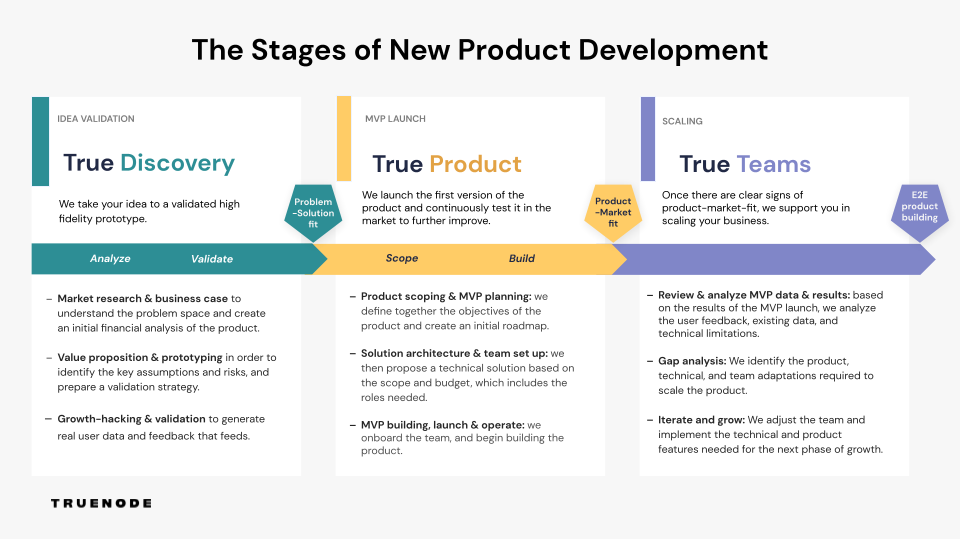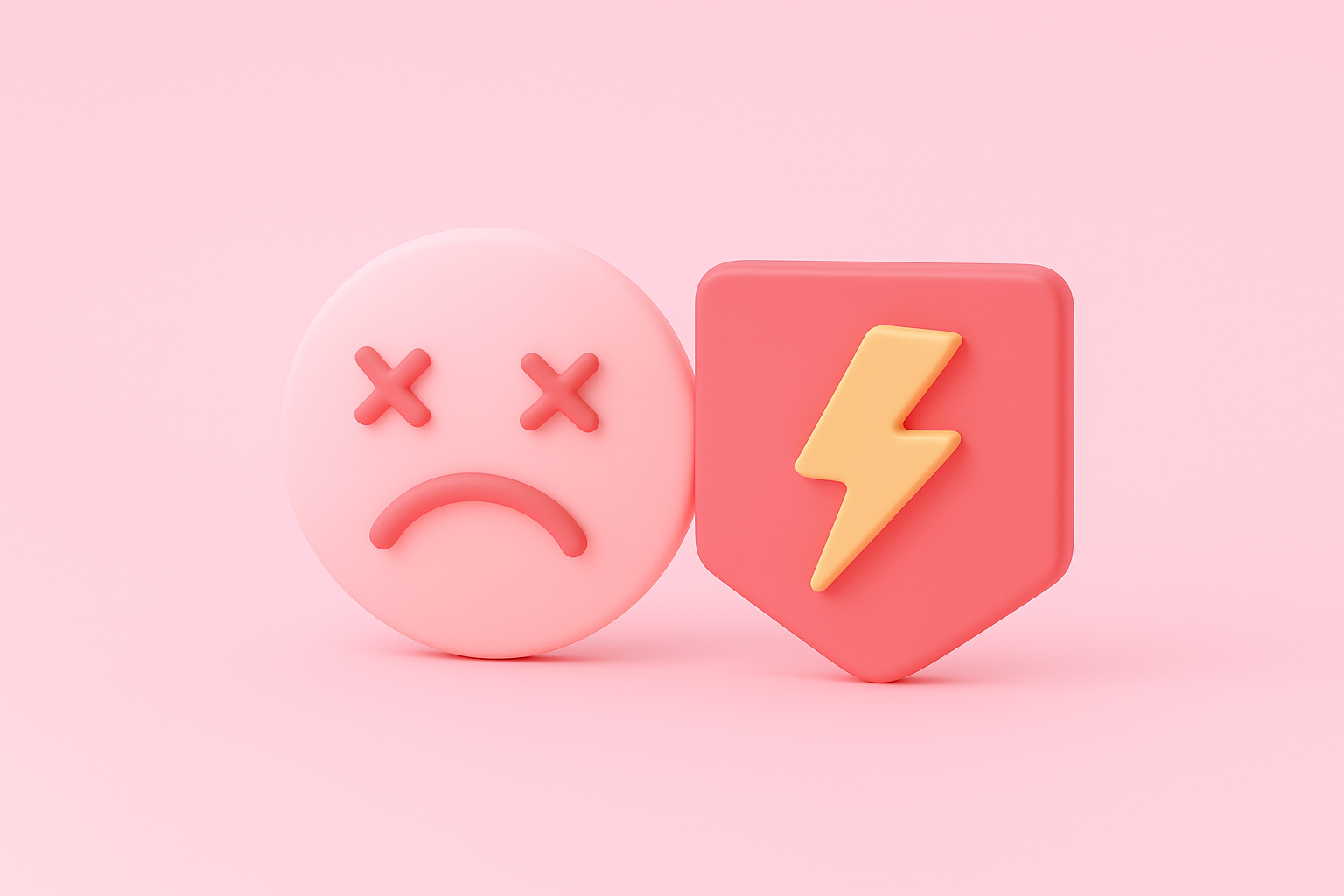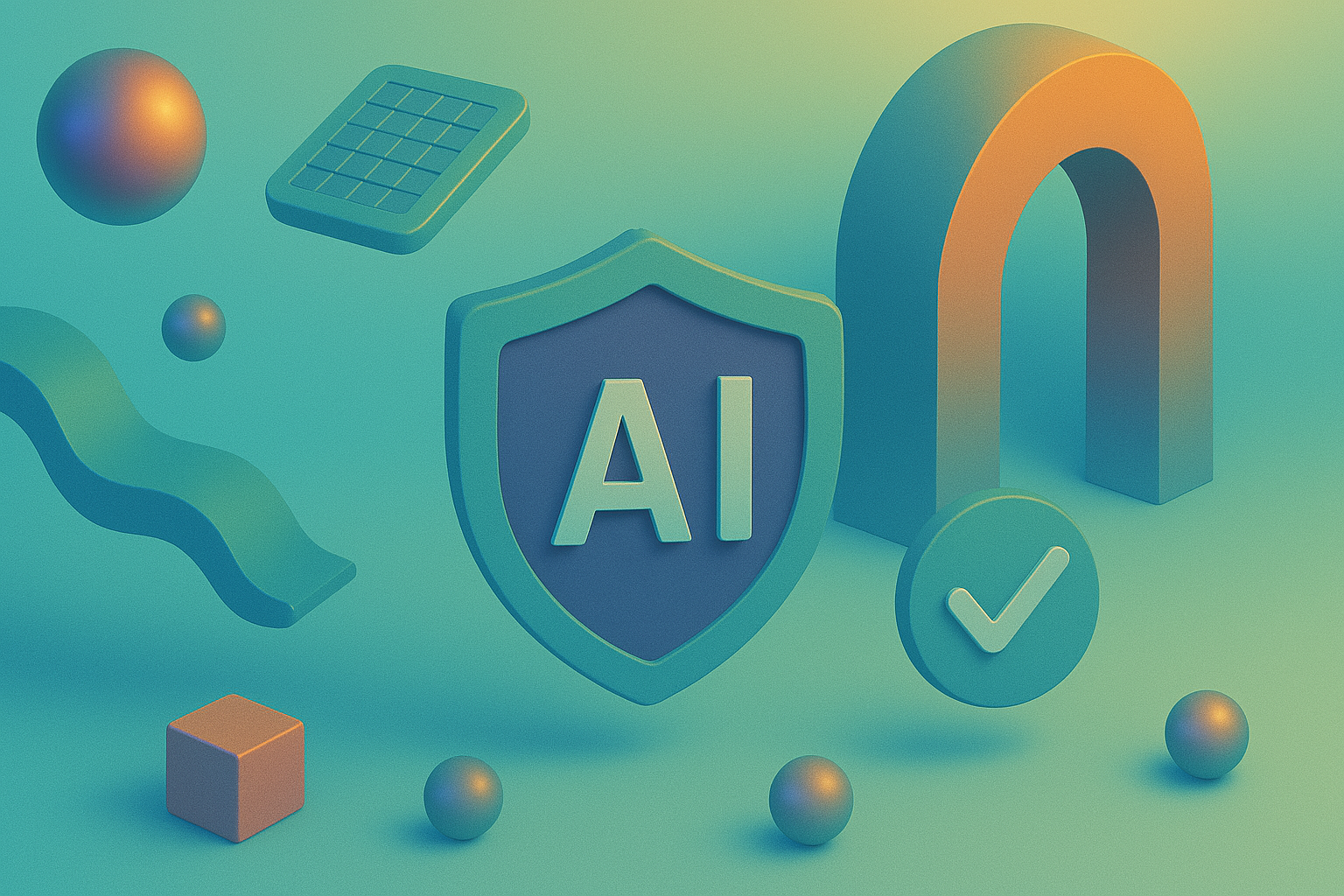Article

The 6 stages of New Product Development Process
It is a well-known fact that new product development is not an easy process. For most companies, it is a constant struggle to develop new and innovative products that consumers want to buy. There are various factors that go into making a new product launch successful, and all of them impose different challenges. But if you know what you are getting into beforehand, developing a new product doesn’t have to be so difficult. Instead, you can create a plan and follow those steps every time you have a new product idea.
This article gives an overview of the stage of product development that we follow at TrueNode to help our clients create and launch meaningful products for an optimal period of time.
What is New Product Development?
Product development is the process of creating a high-quality digital product by selecting the best development and design techniques in conjunction with cutting-edge workflow techniques. A well-thought-out digital product requires time and must be created with a planned objective. This includes brainstorming ideas for new products, creating a full product roadmap, and finally bringing a prototype to market.
New product development isn’t just about coming up with great new products every few months; it’s about creating meaningful products that will create a better experience for your customers and will help your company remain an innovator. The better you understand the product development process, the easier it will be for you to run successful product initiatives.

Stage 1: Market research & business case
To start, you’ll need to do some research. The first part of the new product development process is researching the market and your prospective customers to determine whether there is a demand for your product and how you can best supply it. In the early stages of product development, you don’t want to get too attached to a specific product or idea. Instead, you want to test the waters by researching your competitors’ products and prices, customer demographics, and customer pain points and desires. A careful analysis of the market will help you answer these questions: What problem(s) do customers have that your product could solve? What are customers willing to pay to solve their problem? What would the product look like? What is the product’s market potential? The results of your research will form the basis of your business case and be crucial in defining the budget you need to start your product development process.
Stage 2: Value proposition & prototyping
Once you’ve explored the market and determined your product’s value proposition, it’s time to build a prototype that will help define the key assumptions and risks. This prototype will be the first tangible version of your product, and it’ll be critical to your success. A prototype can take many different forms. It could be a working version of your product software, a sample product design, or even a mockup of your product sales landing page. The point of a prototype is to validate your idea by testing whether it meets your customer’s desires and solves their problem. A simple prototype will be enough to get the ball rolling. You don’t want to spend a lot of time and money on a prototype if you’re not sure that your product idea is viable.
Stage 3: Growth-hacking & validation
Now, when you have already built your product prototype, it’s time to test it out with real users. Growth hacking is a set of marketing strategies used to generate a product’s customer base. In this phase, your goal is to speak with your potential users and validate your assumptions. This will lead to making changes to your product based on their feedback. This is one of the most important stages of product development because it’s where you’ll be able to determine whether or not your product is viable. This is where you’ll be able to answer the big questions: Is there demand for the product? Will customers be willing to pay for the product? Does the product solve the customer’s problem?
By the end of this stage you will have turned your idea into a validated high-fidelity prototype.
Stage 4: Product scoping & MVP planning
Once you’ve determined that there’s a market for your product and that customers want it, it’s time to start scoping out your MVP. An MVP is the minimum viable product, or the basic product that contains the minimum number of features that still provide value to your customers. The scoping and planning phase is where you’ll want to define the objectives of the product and write a product development roadmap that breaks down each step of the new product development process.
Stage 5: Solution architecture & team set up
After you’ve scoped out your MVP, it’s time to propose a technical and team set up. A solution architecture is established to outline the stages of a software project’s IT solution and the requirements for each stage. Your product’s solution architecture will be the blueprint for every engineer on your product team. It will tell them how to create your product and help them stay on track as they work.
This is also the phase where you’ll want to put together your product team. Your team will be responsible for creating your product from scratch through the entire new product development process. Your team will consist of members from different disciplines, including engineers, designers, marketers, and sales/business development professionals. Depending on the size of your product and the complexity of its development, your team could be relatively small or quite large. You’ll also want to put together an MVP budget, which will tell you how much you’ll need to spend to produce a minimal viable product. Your budget will be based on the amount of time it will take to develop your product and the amount of money it will cost to produce it.
Stage 6: MVP building, launch & operate
After you’ve defined your product objectives, built your roadmap and created your solution architecture, it’s time to onboard your team and start to build your product. It’s where you’ll get your first customers and be able to test your marketing channels. It’s also where you’ll be able to gauge the product’s value to customers and see what areas of your product need to be improved.
In short, by breaking down the process into the phases described above, you should have a greatly optimised product development process, and you should be able to reach your ultimate goal.
Case Study – Joblat
TrueNode has helped launch over hundreds of products. Joblat is one example. Our team worked alongside the HDI innovation team to develop and launch a freelancing platform tailored to the Latin American market.
In order to keep their competitive edge, HDI approached us to validate a novel product idea, develop the product and introduce it to the market. The original idea, a freelancing platform tailored to the Latin American market, had the goal of connecting innovative SMEs with top freelancers. When embarking on such a cutting edge approach for the continent, focusing on creating as much value for users in a short amount of time becomes a daunting task.
Check the full case study on the link here to learn more about it.
Do you need help with building new products?
Contact our team — we’ll reach out in no time!






